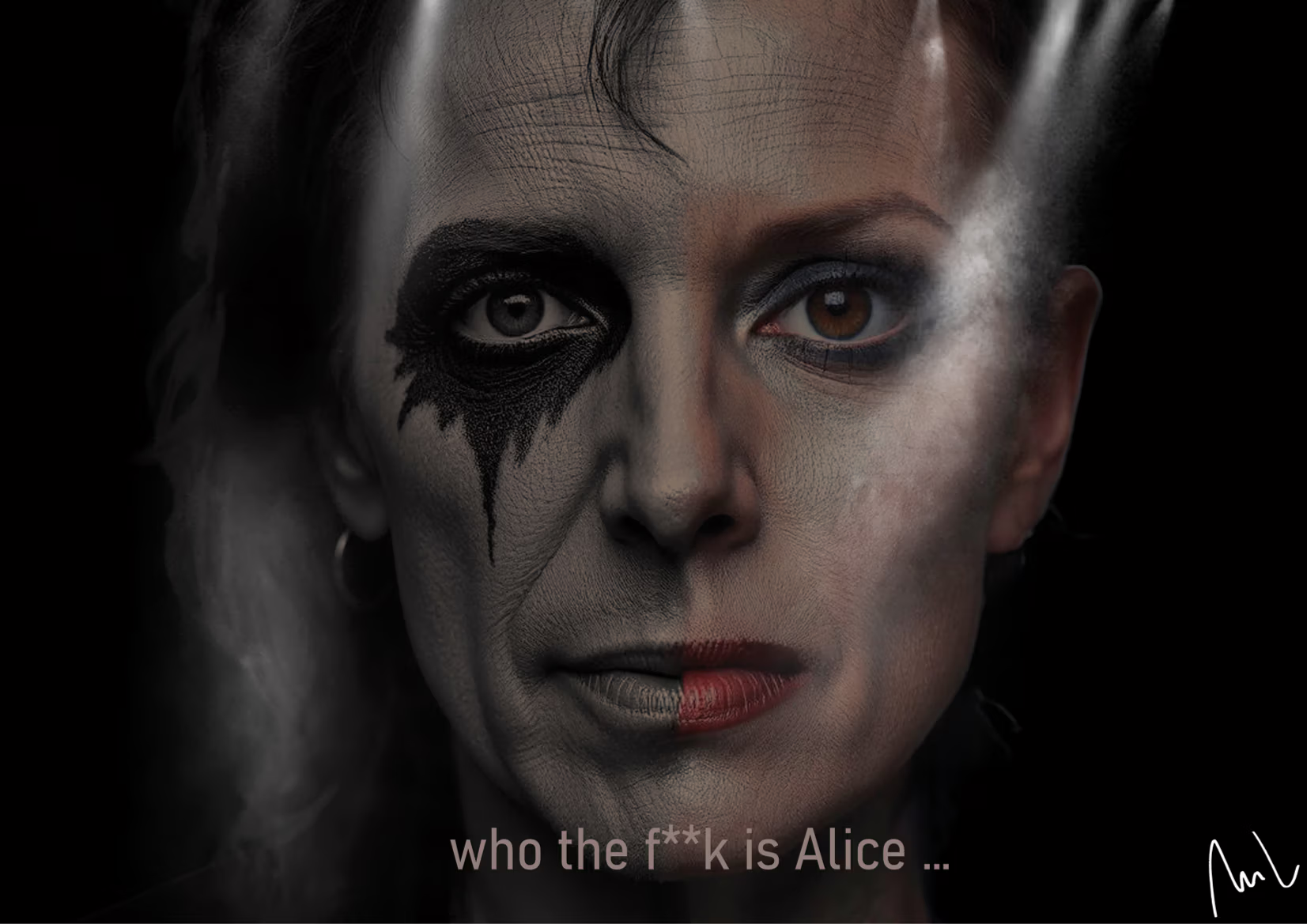“Alice” exploits the ambiguity of names to explore the fluidity of identity, the performative nature of gender, and how names can transcend traditional gender boundaries. The image presents a face split vertically down the middle against a stark black background. The right half displays masculine features rendered in grayscale, complete with Alice Cooper’s signature black makeup streak beneath the eye. The left half reveals feminine features in natural skin tones, with lips painted a bold red. The two halves blend seamlessly together. Beneath the face appears the provocative question: “who the f**k is Alice.”
So which Alice are we talking about here? Not the saccharine subject of Smokie’s original ballad, that’s for sure. Is this aging rocker Alice Cooper experimenting with half his face in drag? Or perhaps a young woman channeling the shock rock legend on her right side? Maybe. Could it even be a grown-up, contemporary take on Alice in Wonderland? The work centers on the name “Alice” itself—a name that crosses gender lines—allowing both masculine and feminine characteristics to coexist in a single face. The evidence seems to point toward the Alice Cooper/young woman interpretation. That unmistakable eye makeup is pure Alice Cooper, and those subtle stage lights radiating in the background reinforce this reading. The phrase “who the f**k is Alice” references the raucous 1995 cover version of Smokie’s vanilla soft rock hit “Living Next Door to Alice” (1976)—a remake that transformed the original into something both funny and musically cringe-worthy. Back in my day, admitting you liked bands like Smokie was social suicide in serious music circles—and honestly, that hasn’t changed one bit.

 Posted on July 20, 2025
Posted on July 20, 2025  by arslohgo
by arslohgo 0
0